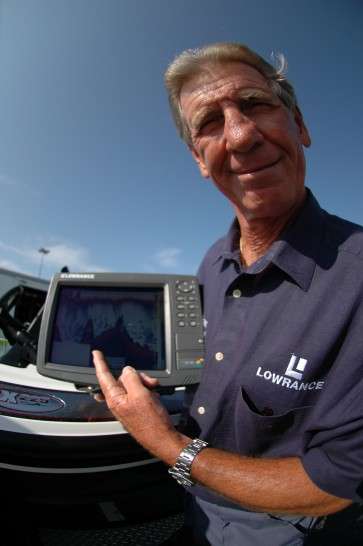
Editor’s note: This is the fourth of a series by Wilson Frazier covering every aspect of how to use, and get more out of, your electronics. Frazier is one of the leading experts in the industry on the setup and use of electronics. For more information, visit his website.
Part 4: What sonar shows you
Let’s start this lesson with a brief review of what sonar does. It measures distance using time. Never forget that.
All your screen is doing is turning lights on or off based on how far away something is from your transducer and how long that something stays in contact with your transducer measuring that distance.
Sometimes that something is the bottom, sometimes it’s an object on or near the bottom and sometimes it’s in the water column.
We’re going to cover a few things that you commonly see on your electronics screen, and we’ll discuss what they show you … or don’t show you.
To fully understand what I’ll be saying (and why it’s true), you need to understand the theory behind sonar. That theory is fully explained in my DVD series. Time and space doesn’t permit an explanation here. So, for now, you’re going to have to trust me.
The first thing I want to say is that surface clutter is not clutter. What you’re seeing shallow can tell you a lot. Learn to analyze it and you’ll be ahead of the game. My DVD series explores this topic in detail.
Let’s start by talking about arches in the water. The length of the arch has nothing to do with its size. Length is simply a function of how long it took the transducer to move towards, over and away from the object it was in contact with based on your horizontal velocity.
If you want to know how big the thing is, look at the top (center) of the arch. If it’s big, the center will be wide. If it’s small the center will be narrow.
Note: Most anglers think an arch is a fish. That’s possible. It’s also possible that it’s a waterlogged stick or a submerged beer can.
A long, straight line — sometimes called a snake — is something moving along with your transducer at about the same speed and distance from it. The longer the line the longer it was in contact with the transducer. It tells you nothing about how long the object is. Were you moving? Was it moving? Were you sitting still?
Streakers — long lines running up from the bottom — are one of my favorite things to talk about. For some reason a lot of anglers think they’re fish moving up off the bottom to feed. They may or may not be feeding, but they are not necessarily moving up off the bottom to do it. A streaker could be something moving horizontal, its distance measured on a horizontal ruler.
A fast moving object will have a more vertical line. A slow moving object will have a more horizontal line moving from left to right towards the ruler.
The last thing I want to address is the depth range of your unit. Automatic is a great place to start. It’ll give you a ton of useful information at almost any depth. But you can make adjustments to it that’ll give you a closer view.
If you want, you can set it to read between 10 and 20 feet or you can adjust it to only read the first 20 feet of water. (These depths are only examples. Most units are adjustable in 5 foot increments.) Adjustments will give you a bigger display and more detail.
Pro Angler Tip: Elite Series pro Greg Hackney adjusts his unit’s depth range, but only after he finds the fish. “When I figure out how deep they are, I like to adjust my depth reading on my unit to cover only that general depth. It lets me concentrate exclusively on the productive depth, without a lot of distractions.”
Next time, we’ll talk about what your GPS really shows you. See Part 1, Part 2 and Part 3 of this series.





